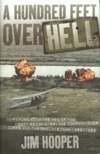 For Lieutenant Peter Van Haren, leader of 2nd Platoon, C Company, 61st Infantry Regiment (Mechanized), October 25, 1968, was memorably scary, even for the Con Thien area. His men were pinned down, sizeable North Vietnamese forces were massing on his flanks, three of his tanks were disabled by mines, and bad weather seemed to limit any reliable air support. But flying overhead was a Cessna O-1 Bird Dog of the 220th Recon Airplane Company, performing forward air controller (FAC) duties, and more.
For Lieutenant Peter Van Haren, leader of 2nd Platoon, C Company, 61st Infantry Regiment (Mechanized), October 25, 1968, was memorably scary, even for the Con Thien area. His men were pinned down, sizeable North Vietnamese forces were massing on his flanks, three of his tanks were disabled by mines, and bad weather seemed to limit any reliable air support. But flying overhead was a Cessna O-1 Bird Dog of the 220th Recon Airplane Company, performing forward air controller (FAC) duties, and more.
“Most of the time in combat, things are happening too fast or, if you’re a leader, you’re too busy to be that scared,” he recalled. “But this time, as the FAC kept telling me how many, how well armed and how close the enemy was, it was freaking me out. We needed the info, but every tidbit made it harder for me to keep the pedal down.
“And then they started shooting at him,” Van Haren added. “Amazingly, he didn’t peel off but hung right in there and kept directing us. As is true with many heroic actions in combat, he inspired us to keep hammering forward, even though the incoming fire was getting heavy now. That guy had some real guts!”
Such comments might have been made for any of the low and slow-flying Bird Dog crews that flew close tactical reconnaissance and called in artillery and airstrikes for beleaguered grunts or even swooped in to fire their own white phosphorus rockets or (as in this case) fire M-16s out the side doors at the enemy below. What made the 220th Recon Airplane Company’s job a bit more challenging was that it operated in I Corps at the demilitarized zone, where the opposition was less often Viet Cong than it was NVA, with a wide, nasty array of return fire ranging from 7.62mm AK-47s on full automatic to 57mm anti-aircraft artillery emplaced just north of the DMZ.
War correspondent Jim Hooper was inspired to write A Hundred Feet Over Hell by the experiences shared, somewhat reluctantly, by his brother, Bill Hooper, who had been wounded in action while serving with the 220th—aka the Catkillers. In the course of his research, however, he assembled an extensive collection of memories from members of that unit and the ground troops, Army and Marine, that they supported, to construct a gripping blow-by-blow narrative of desperate actions so numerous as to become almost routine to the men who fought there. Though not a comprehensive unit history, Hooper’s chronicle preserves a lot of firsthand accounts that might otherwise be lost. In addition to covering both the intensity and terror of a tour of duty in the DMZ, these include many of the lighter memories in an outfit that, by virtue of the extraordinary circumstances, indulged in the sort of between-combat shenanigans summed up by member Jim Hudson: “The thing is that the 220th was not like M*A*S*H, it was M*A*S*H!”
Zenith Press, 2009




